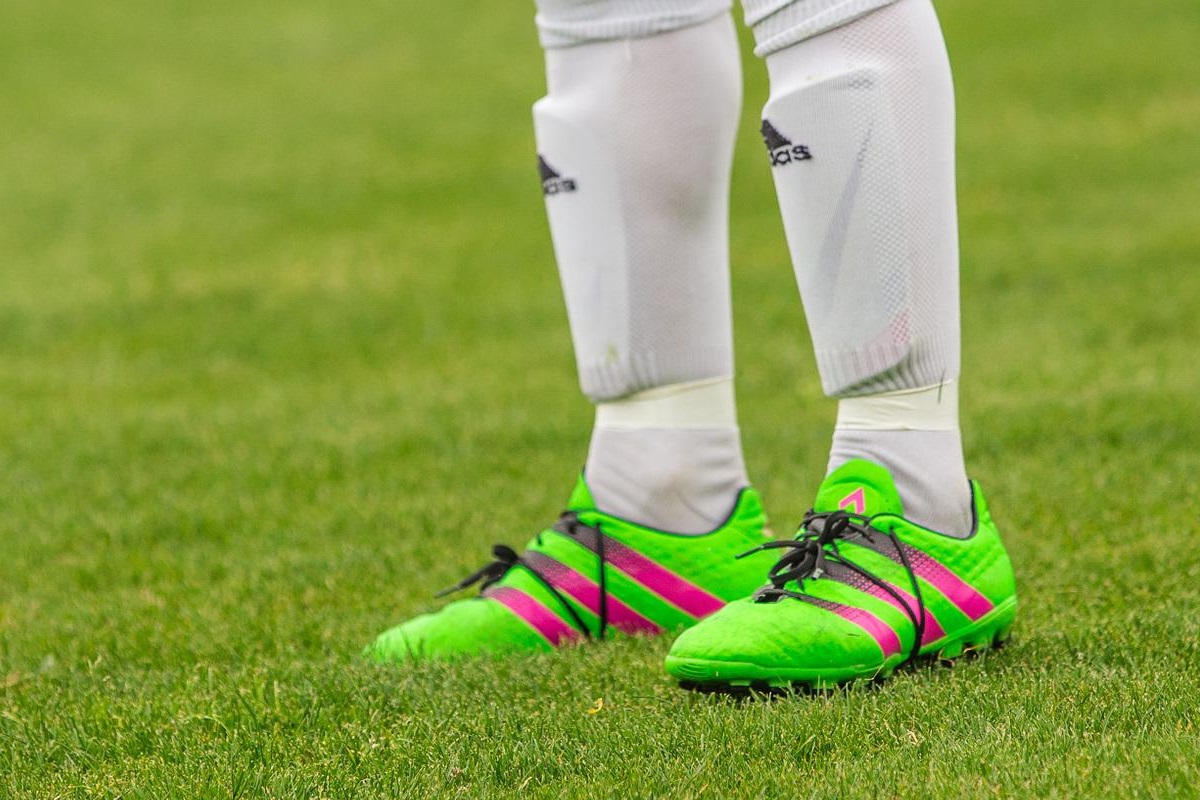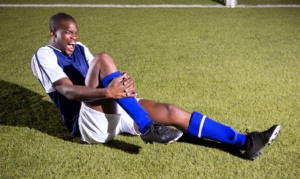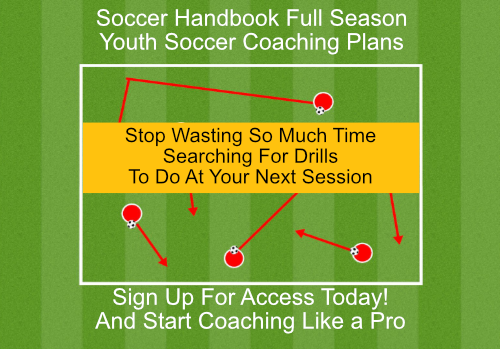Soccer doesn’t have as much safety equipment as sports like football or hockey, but one essential item for a competitive game is a pair of shin guards.
With so many tackles being made around leg height, the shins of soccer players are very vulnerable to being hit. Most of the time the contact is accidental (if you’re playing in a friendly enough game), but even so, you’ll want to have your legs protected.
Once you’ve found a sturdy pair of shin guards, you need to make sure they fit properly.

A well-fitting pair of shin guards will sit around 2 inches below your knee and rest just above the bend in your ankle.
In this guide, we will talk about how to properly wear a pair of adult soccer shin guards or youth shin guards and what they should feel like when they fit perfectly.
Measuring Your Legs
The first thing you need to do to make sure you have properly fitting shin guards is to measure your legs. All you need for this is a tape measure.
Start by bending your knee by placing your foot on a chair to put your knee at a 90-degree angle. Then, measure from 2 inches below the top of your knee to the point where your ankle starts to bend into your foot. Make a note of this measurement because it will be important later.
Finding The Right Size Shin Guards
The measurement you took of your leg earlier should be all you need to know about what shin guard size you need. This is the measurement of the area on your leg where you’ll wear the guard. So look for shin guards that are the same length.
Most sports equipment stores will sell shin guards in sizes small, medium, and large but will often have a more specific measurement on the packaging. For example, some manufacturers will recommend the ideal shin guard size for your height.
Here are some examples of what height you can expect each shin guard size to fit best for:
- Small: 4’6”
- Medium: 5’2”
- Large: 5’10”
- Extra large: 6’4”
- Extra-extra large: 6’6”
As you can see, these aren’t the most specific measurements and there’s a lot of leeway with how tall you are and what size shin guards you should get.
It’s also worth remembering that different brands will produce shin guards with different measurements for the same sizes. For example, Nike doesn’t produce as many different sizes as Adidas or Puma and, as a result, the actual measurements for small, medium, and large will be slightly different.
If you’re in any doubt, you could always ask a staff member to help you out with some better measurements.
If you’re shopping for youth shin guards, the sizes might be listed by age. In this case, try and get as close to the measurement you took earlier because this will be way more accurate than a kid’s size by age.
What Should I Look For In A Pair Of Soccer Shin Guards?
So, we know which measurements you should be looking at with a pair of shin guards and what they should feel like when worn properly. But what other factors should you be thinking about when buying a pair of shin guards for soccer?
Believe it or not, soccer shin guards come in a variety of different designs that are intended to make them fit better on different people. These are the kinds of things you also need to think about when finding a new pair of shin guards.
Let’s take a look at some of the most common designs.
Velcro Straps
The classic shin guard design involves one or two velcro straps that connect around the calf of the player while worn. There’s a reason this design has been around for decades and it’s because it works. Your shin guards will stay firmly in place during a match and they will be compatible with any kind of soccer socks.
The downside to these shin guards is that the straps can get uncomfortable because they tend to rub against your skin. Plus, they tend to stretch over time, meaning, they will eventually be too loose and will not stay in place.
Slip-Ins
The second most common design for soccer shin guards is ones that simply slip into your sock and are held there by the tightness of the sock itself. These guards manage to avoid the issue of uncomfortable straps rubbing against your skin but they do still have downsides. With a standard pair of soccer socks, you might find the slip-in shin guards sliding down your leg during a match.
This means you’ll end up spending more time adjusting your guards and your socks instead of focusing on the game. To combat this, many shin guard manufacturers offer sleeves that hold the guards in place.
Ankle Guards
Some shin guards also come with a built-in ankle guard which wraps around and applies pressure to your ankle. You can also buy ankle guards separately. Some soccer players prefer the feeling of support this gives them, particularly on a vulnerable joint like the ankle.
The other benefit of shin guards with connected ankle guards is that they don’t use potentially uncomfortable velcro straps because all of the support is connected to the ankle guard. Similarly, you won’t find these shin guards sliding around inside your sock.
Generally, these are the best all-around shin guards you can get, but only if you’re comfortable with how they feel while you’re playing.
Accessories
Some players even use accessories to enhance the stylish design of their shin guards or to make them fit better.
One such accessory is shin guard tape. Players will wrap this around the outside of their sock at the top and bottom of their shin guards to secure them more firmly in place.
Something else you might not know is that you can get ankle guards without buying shin guards. If you prefer wearing them, this comes in handy because they tend to wear out faster than the actual guards.
Final Thoughts
Hopefully, you now have a much better understanding of how soccer shin guards are supposed to fit. Next time you’re shopping for a pair of soccer shin guards, make sure you bear our tips in mind to have the best protective gear on the field!



